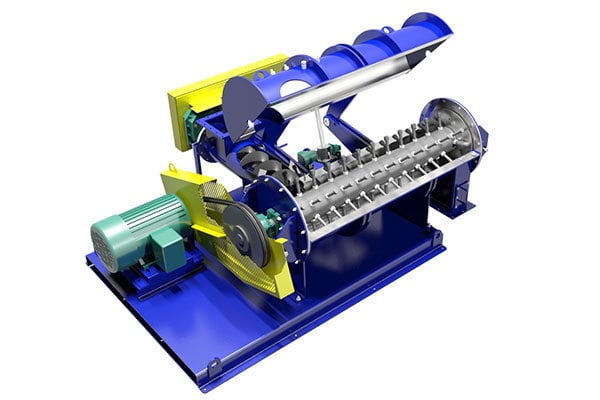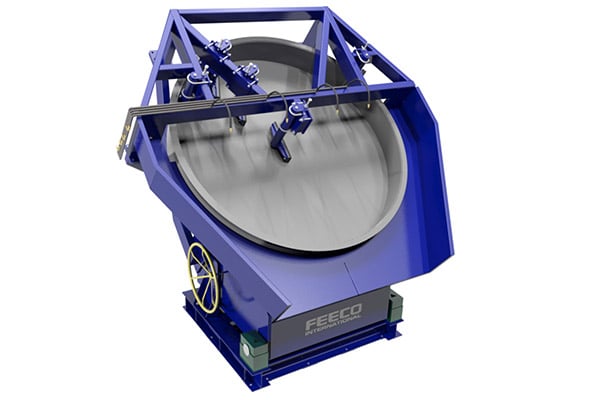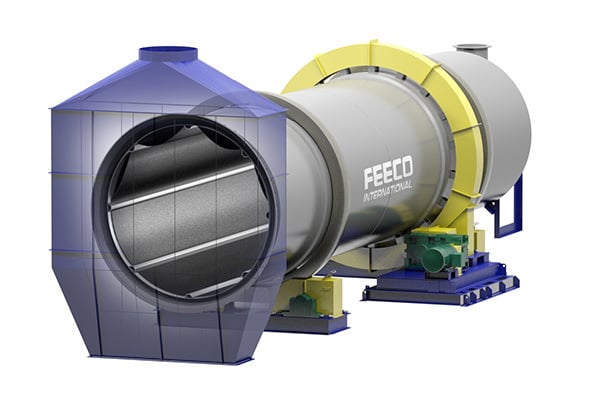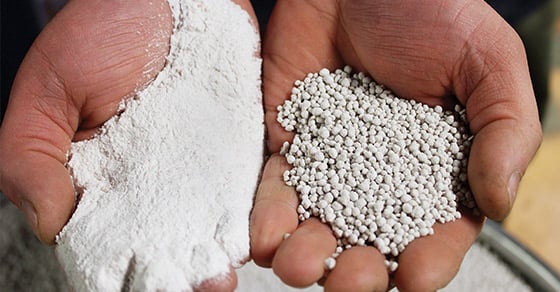The flow properties of a bulk solid can have a significant impact on process efficiency and the success of the end product. And while bins, hoppers, and the like are often designed to minimize such issues, agglomeration can be a valuable tool in improving the flow characteristics of bulk solids.
Effects of Poor Flowability
Process flow, and the ability to meter material precisely into a process, is critical to maintain consistent end product output and quality.
As such, poor flowability can have widespread and varied implications on a processing operation, as well as on the end product. Problems such as arching, bridging, segregation, ratholing, and more, resulting from a material with poor flow properties, can cause issues such as:
- Reduced output
- Product spoilage
- Increased maintenance and downtime
- Inconsistent product quality
- Decreased process efficiency
- Reduced product quality
Ultimately, these effects impact the bottom line, making the optimization of flowability a central focus to many processing operations working with bulk solids.
Factors that Influence the Flowability of Bulk Solids
Many factors, both environmental and material-specific can have an effect on how bulk solids flow. Among others, this includes:
Cohesion and Adhesion Forces
Cohesion is the likelihood that a material will stick to itself, while adhesion is the likelihood that a material will stick to something else, such as a hopper or bin wall.
Particle Size
Particle size will also have an impact on the flowability of a material, with powders typically exhibiting poorer flow properties than coarse particles or agglomerates.
Particle Shape
The shape of particles can also have an effect on their ability to flow. Irregularly shaped particles have a greater likelihood for surfaces to contact each other and are therefore more likely to interlock.
Conversely, spherical particles have very little opportunity for contact between surfaces, promoting increased flowability.
Particle Density
The density of particles will also impact flow properties; particles with a higher density are likely to flow better, as gravity has a greater influence on them.
Moisture Content
Moisture content is significantly influential on the flowability of bulk solids. In general, as the moisture content of a material increases, so too do its cohesion forces, causing the material to stick to itself and cause issues such as caking. This is especially problematic when working with hygroscopic materials, or materials that will absorb moisture from the atmosphere, such as potash.
Temperature
Temperature can also sometimes impact the flow of bulk solids, depending on the material.
Stagnant Residence Time
Believe it or not, the length of time a material sits stagnant in storage or in a bin or hopper can also affect flow properties. Forces such as pressure, chemical reactions, and more can cause particles to bond together in undesirable ways, changing the flow properties of the material over time.
Angle of Repose
A material’s angle of repose is the angle at which material can be piled onto a horizontal plane before it begins to slide against itself, and is a result of how the factors above combine to influence how a material moves against itself. A material’s angle of repose is often used as an indication of its flowability.
Improving Flowability through Agglomeration
While it’s clear that various factors work together to influence the flowability of a material, one way to reduce the potential for flowability issues is through agglomeration.
Agglomeration refers to particle size enlargement, and can be carried out using a variety of techniques and equipment. Since round granules offer less potential for interlocking surfaces, we’ll focus on methods that produce rounded, or spherical granules.

Potash powder before (left) and after (right) tumble growth agglomeration carried out in the FEECO Innovation Center
To produce rounded granules, various agglomeration equipment is available, with the best solution often being a combination of equipment.

3D model of a FEECO pin mixer
Pin mixers, which utilize an intense spinning action combined with a liquid binder, can be used to create micro-pellets, or seed pellets.

3D model of a FEECO disc pelletizer
Disc pelletizers, also commonly known as pan granulators, which utilize a tumbling action paired with a liquid binder, are used to created slightly larger pellets. When combined, the pin mixer and disc pelletizer produce refined, spherical pellets, with significant opportunity for fine-tuning and size control during processing.

3D model of a FEECO rotary/agglomeration drum
A rotary drum, a large, rotating drum that follows similar agglomeration principles to a disc pelletizer, may also be used depending on the requirements of the agglomerates.
See our infographic on the basics of agglomeration equipment >>
A study conducted by Chris Kozicki, FEECO Process Sales Engineer, and Greg Mehos, Project Engineer at Jenike & Johanson, Inc., looked at how tumble growth agglomeration influenced the flow properties of potash on 304 No. -2B finish stainless steel.
The study examined the flow properties of the potash in powdered form, as well as after having been agglomerated on a continuous basis. Kozicki and Mehos found that when potash powder was agglomerated, the cohesive strength (propensity for sticking to itself) and wall friction (potential that it will stick to the wall) were reduced – both critical aspects of improving flowability. Additionally, the bulk density of the material was also increased, further contributing to improved flow. In comparing the two materials, the authors found that cohesive arching did not occur in a hopper, bin, or silo when the material was agglomerated.
Conclusion
Agglomeration can be a valuable tool in improving the flowability of bulk solids. The use of tumble growth agglomeration equipment such as pin mixers, disc pelletizers, and rotary drums to process bulk powders into more readily flowable materials is widely used in the processing of bulk solids. In addition to improved flowability, agglomeration can offer a number of other advantages to a process and product as well. See our infographic on the benefits of agglomeration >>.
While agglomeration can offer significant improvement and many other benefits, it’s important to note that agglomeration is just one tool available in improving flowability; among other methods, optimizing hopper, bin, or silo designs for mass flow is also critical to the optimal flow of bulk solids.
FEECO is the global leader in tumble growth agglomeration systems and equipment. We offer feasibility and continuous pilot-scale testing and process development, as well as custom agglomeration equipment, complete systems, and even parts and service support. For more information on how agglomeration could help your material, contact us today!



